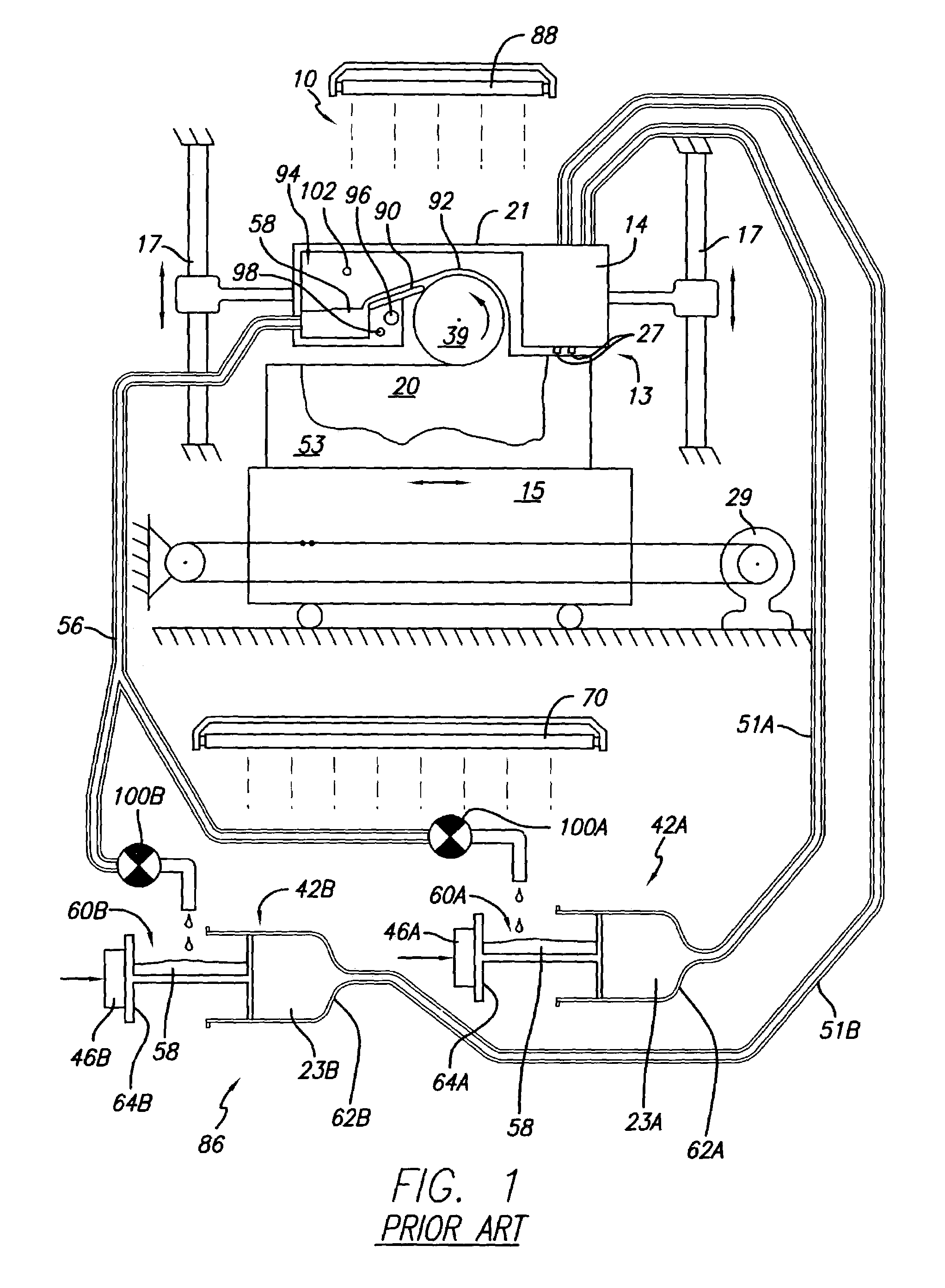Accumulation, control and accounting of fluid by-product from a solid deposition modeling process
a solid deposition modeling and by-product technology, applied in the field of accumulation, control and accounting of fluid by-products from solid deposition modeling processes, can solve the problems of shortening the time to develop prototype parts, requiring different solutions to different problems, and quickly producing limited numbers of parts in rapid manufacturing processes. achieve the effect of reliable and precis
- Summary
- Abstract
- Description
- Claims
- Application Information
AI Technical Summary
Benefits of technology
Problems solved by technology
Method used
Image
Examples
Embodiment Construction
[0029]The present invention provides its benefits across a broad spectrum of SFF processes. While the description which follows hereinafter is meant to be representative of a number of such applications, it is not exhaustive. As will be understood, the basic apparatus and methods taught herein can be readily adapted to many uses. It is intended that this specification and the claims appended hereto be accorded a breadth in keeping with the scope and spirit of the invention being disclosed despite what might appear to be limiting language imposed by the requirements of referring to the specific examples disclosed.
[0030]While the present invention can be applicable to other SFF techniques and objects made therefrom, the invention will be described with respect to solid deposition modeling (SDM) utilizing a build material dispensed in a flowable state. However it is to be appreciated that the present invention can be implemented with any SFF technique that requires the continuous or in...
PUM
| Property | Measurement | Unit |
|---|---|---|
| thermal energy | aaaaa | aaaaa |
| pressure | aaaaa | aaaaa |
| mechanical properties | aaaaa | aaaaa |
Abstract
Description
Claims
Application Information
 Login to View More
Login to View More - R&D
- Intellectual Property
- Life Sciences
- Materials
- Tech Scout
- Unparalleled Data Quality
- Higher Quality Content
- 60% Fewer Hallucinations
Browse by: Latest US Patents, China's latest patents, Technical Efficacy Thesaurus, Application Domain, Technology Topic, Popular Technical Reports.
© 2025 PatSnap. All rights reserved.Legal|Privacy policy|Modern Slavery Act Transparency Statement|Sitemap|About US| Contact US: help@patsnap.com



